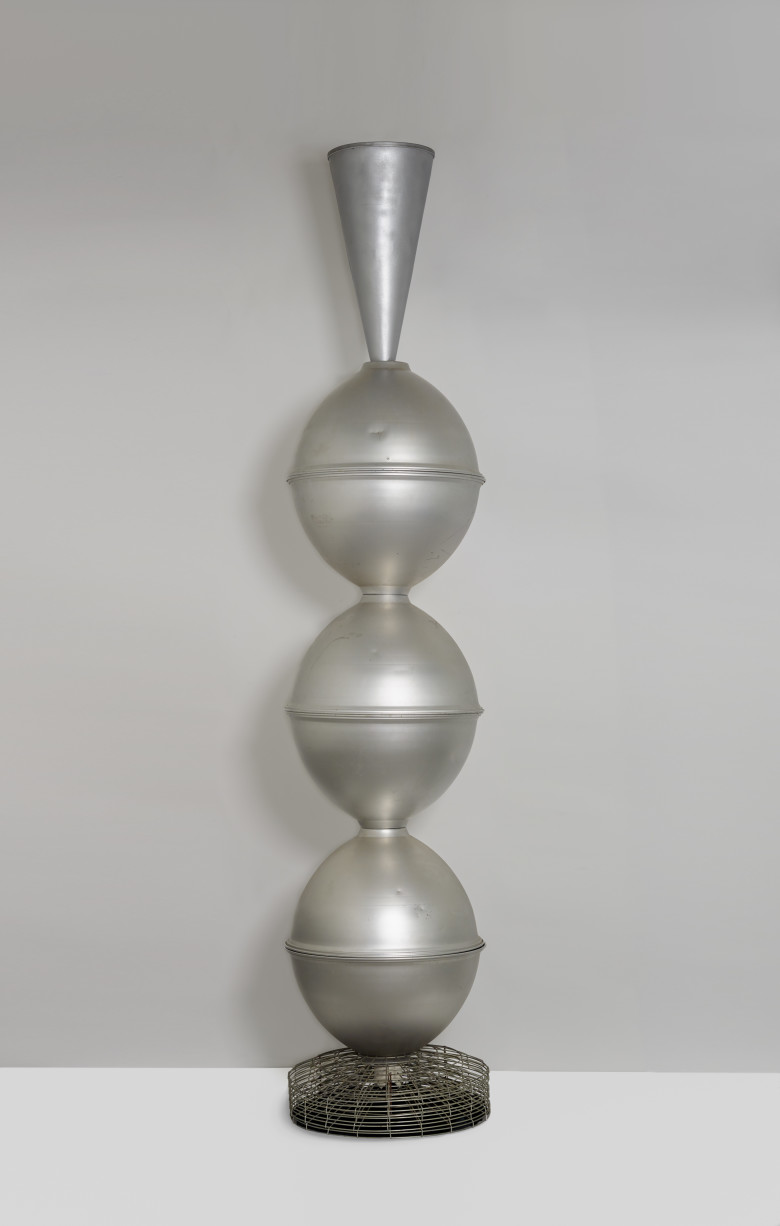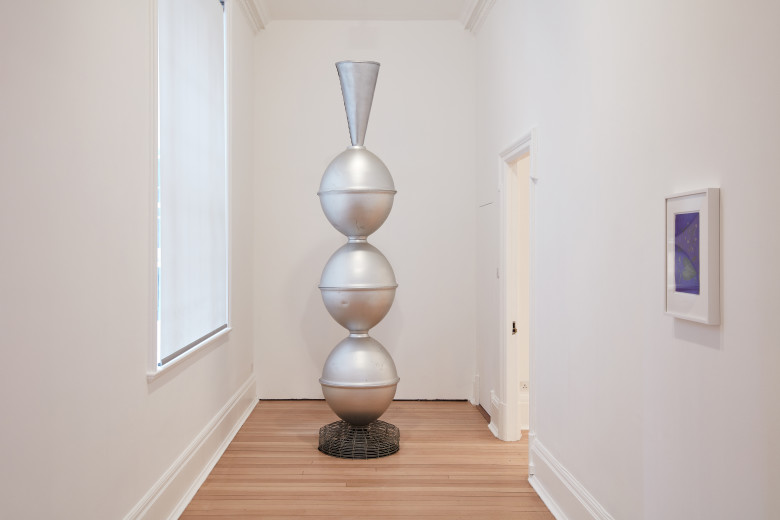



120 x 24 x 24 in.
Adkins’s totemic sculpture Coahoma is part of a group of works dedicated to the blues singer Bessie Smith (1894–1937), which were first exhibited in the recital ‘Belted Bronze’ at Pageant Soloveev, Philadelphia. Nicknamed ‘the Empress of the Blues’, Smith was the most popular female blues singer of her time and recorded regularly with important early jazz instrumentalists such as Clarence Williams, James P. Johnson, and various members of Fletcher Henderson’s band, including Louis Armstrong and Charlie Green. For Adkins, Smith represents the often contradictory lives of transgressive figures, who are both lauded and thwarted by cultural and historical norms; in Smith’s case, she was paid no loyalties by Columbia Records for the 160 releases she performed for the label and was considered outside of the mainstream because of the eroticism of her music and personal life. She died in 1937 from injuries sustained in an automobile accident in Coahoma, Mississippi.
Conceiving Smith as a creative deity, Adkins’s Coahoma draws from the stylised Songye power figure produced in what is today the Democratic Republic of the Congo. The standard Songye sculpture is composed of a columnar geometric form that is divided into three sections of the body: a protruding head, an enlarged midsection, and short legs atop large, paddle-shaped feet. In Adkins’s rendition, Smith is symbolised by an abstract figure formed of three rounded geometric forms, topped with a trumpet mute. The sculpture also recalls Endless Column (1918) by Constantin Brancusi, whose work stands as a recurring reference in Adkins’s oeuvre.
